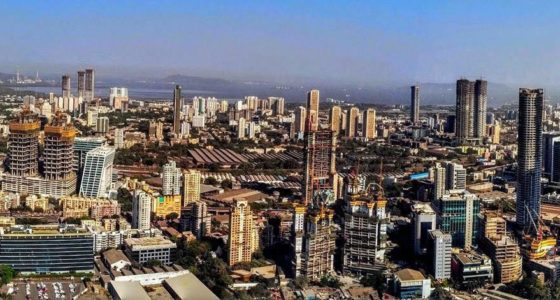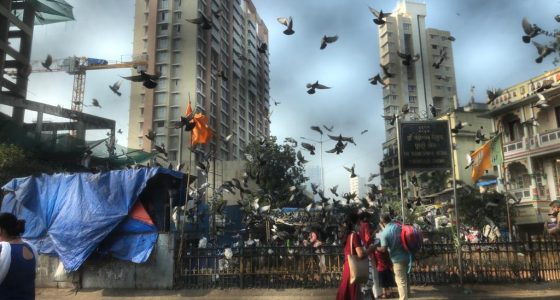The budget for the fiscal year 2024-25 was announced by Union Finance Minister N Sitharaman.
Here’s what the real estate industry got to say about the budget.
Sandeep Runwal, President, NAREDCO Maharashtra
The Interim Budget for 2024-25 presented by Union Finance Minister Nirmala Sitharaman reflects a comprehensive vision aimed at fostering inclusive growth and sustainable development in India. The focus on transforming India into ‘Viksit Bharat’ by 2047 underscores the government’s long-term commitment to national development. This vision, encapsulated in the slogan “sabka saath, sabka vikas” (together with all, development for all), emphasizes the inclusive nature of the government’s approach. The emphasis on GDP, redefined as governance, development, and performance, is a strategic move, particularly in the context of the upcoming general election. This redefinition indicates a shift towards a holistic view of economic growth, one that intertwines effective governance and sustainable development with performance metrics. It’s a narrative that might resonate well with the electorate, considering the administration’s bid for a third consecutive term. The commitment to the PM Awas Yojana Grameen, with the target of constructing 2 crore additional houses, continues the government’s focus on rural development. Achieving the milestone of 3 crore houses under the rural housing scheme and setting an ambitious target for the next 5 years reflects a significant investment in infrastructure development that addresses a basic need – housing. The announcement of a new housing scheme for the middle class is particularly noteworthy. This initiative seems to be aimed at addressing the housing needs of those living in substandard conditions like slums and chawls or those burdened by rent. By facilitating home ownership, the government is not only looking to improve living standards but also to stimulate the real estate sector and associated industries.
Dr Niranjan Hiranandani, Founder, Hiranandani Group and Chairman, National Naredco
The FM decoded an integrated and equitable growth budget outlay encompassing significant social reforms, enhancing economic growth value chain, emphasize of sunrise sectors and impetus to urban & rural housing with mega infrastructure projection. India has risen in its global leadership by paving the way for world economies, setting new standards, establishing strong geo-political allies and corroborating address geoeconomic vagaries. The buoyancy in the domestic economy is an outcome of the comprehensive GDP growth mantra in the pursuit of the Sab ka Saath, Sab ka Vikaas objective. Keeping the fiscal consolidation target at 5.1% will decrease the cost of borrowing for businesses and industries. This in turn will help stimulate economic growth, stabilize the economy and reduce the risks of inflation. The enhancement in infrastructure outlay by 11% will bode well for firming up the growth of residential, commercial and industrial real estate asset classes across the geographies. The augmentation of multi-modal corridor connectivity with new railway corridors, and doubling of airports and ports corridors will have a multiplier effect on the real estate landscape. The extension of the PMAY scheme for rural areas is in accordance with the objective of Housing for all laid by the Hon’ble PMO. A focused direction is set for addressing the housing deficit needs of the urban poor with the buy or build house motto. The continual skilling & Upskilling of the working populace will help the sector gain a competitive advantage and increase direct as well as indirect employment opportunities. Therefore, India’s vision for Amrit Kaal is stated very clearly and thus the country is on track to becoming Vikshit Bharat by 2047.
Anuj Puri, Chairman – ANAROCK Group
As anticipated, the Interim Budget 2024 made no big-bang announcements, but it continued its focus on infrastructure upgrades and building connectivity across the country. This will benefit real estate growth in not just the top cities but in Tier 2 & 3 cities across the country. The FM made some announcements that will go on to benefit the sector both directly and indirectly:
PM Awas Yojana (Gramin) – Despite all the challenges, the implementation of this scheme continued, achieving the target of close to 3 crore houses and now aims for 2 crore more houses to be taken up in the next five years.
Housing for the middle class – The Government will launch a scheme to help deserving sections of the middle class, living in rented houses or slums, or chawls and unauthorized colonies, to buy or build their own houses. This is likely to free encroachment areas like slums for easier redevelopment.
Capex outlay allocation to be increased by 11.1% to INR 11,11,111 lakh Cr, accounting for 3.4 % of GDP – This will unlock the potential for real estate development across assets because major part of this allocation will be used for various infra upgrades and new projects.
Transit oriented development in urban areas – this may give a boost to housing demand in cities and lead to rise in residential prices.
Development of iconic tourist centres – this is likely to favourably impact the hospitality sector with hotels and restaurants across categories. Moreover, long-term loans proposed to states for tourism.
Extending tax benefit to startups for another year – this may help the office real estate to rejuvenate.
Manju Yagnik, Vice Chairperson of Nahar Group and Senior Vice President of NAREDCO- Maharashtra
The real estate industry expects a good change in response to the Interim Budget 2024’s pledge to support middle-class housing. The government’s dedication to helping those who live in chawls, unofficial colonies, slums, and rented homes achieve homeownership is a reflection of a revolutionary vision. As property developers, we applaud this initiative and anticipate working together to implement solutions for accessible homes. The finance minister’s initiative indicates a common goal for inclusive real estate development. It will boost the industry’s expansion and contribute substantially to achieving the goals of the middle-class population.
Ayushi Ashar – Director at Ashar Group & Member of Managing Committee of MCHI-CREDAI
The real estate industry expects a good change in response to the Interim Budget 2024’s pledge to support middle-class housing. The government’s dedication to helping those who live in unofficial colonies, slums, and rented homes achieve homeownership is a reflection of a revolutionary vision. As real estate developers, we applaud this initiative and anticipate working together to implement solutions for accessible homes. The finance minister’s initiative indicates a common goal for inclusive real estate development. It will boost the industry’s expansion and contribute substantially to achieving the goals of the middle-class population.
Ashwin Sheth, Chairman, Ashwin Sheth Group
We acknowledge the strategic direction outlined in the 2024 interim budget, particularly its focus on reinforcing the affordable housing sector through the increased allocation for the Pradhan Mantri Awas Yojana (PMAY). This puts a spotlight on the government’s unwavering commitment to encouraging inclusive real estate development, acknowledging the key role of affordability in comprehensively addressing housing needs. The allocation of 70% of PMAY houses to women in rural areas is of special significance and will go a long way towards providing secure living spaces and advancing women empowerment. The progress in the implementation of PM Awas Yojana (Grameen), approaching the target of three crore houses, with a commitment to taking up construction of two crore additional houses over the next five years, reflects the government’s dedication to meet the growing demand for housing in rural areas. Maintaining a delicate balance between promoting affordable housing and ensuring sustained growth across all segments is crucial, and will no doubt foster an environment conducive to growth, investment, and the holistic development of the real estate ecosystem. Moreover, the increased outlay for infrastructure to Rs 11.11 lakh crores in FY25, is a welcome move, giving further support for overall growth and development in the sector. Building on these developments, we look forward to continuing to help develop a robust and inclusive real estate landscape in India.
Also Read: REAL ESTATE SECTOR’S EXPECTATIONS FROM INTERIM BUDGET 2024-25









